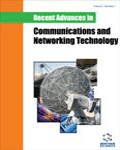Abstract
Background: While smart objects are present in our cities everywhere, the real aim of the Internet of Things is not turned into reality yet. Each smart object is still designated to a specific task and requires proprietary procedures for interaction. Thus, it becomes more necessary to have a connection platform for abstracting the complexity of smart objects and to present their data to the end-users through a simpler interaction procedure.
Objective: This paper aims at defining a model that represents a connection/interaction layer between smart objects and people, building a more intuitive human interface towards the Internet of Things. Method: We propose an immersive virtual platform, able to engage end-users and let them be aware of the following strategic factors: where smart objects are deployed in the city, what features/data they offer, and how this data represents context for the urban areas. Results: We have developed and tested a prototypical Virtual Environment of Things, within an immersive 3D environment in which the user can explore the virtualized urban area and interact with the available smart objects through gestures and affordable Virtual Reality devices. The virtual environment is fed by real-time data produced by a multiprotocol sensing middleware that simplifies the interaction with physical devices through high-level RESTful APIs. Conclusion: Paying attention to interconnection of people and things, this prototype empowers final users with engaging tools in order to enhance the fruition of the IoT paradigm. The developed system was compared with existing solutions and fully tested in a real scenario.Keywords: Human Computer Interface, IoT, middleware, smart city, NVE, VEoT, virtual reality, WebGL.
Graphical Abstract
 14
14 2
2 1
1











